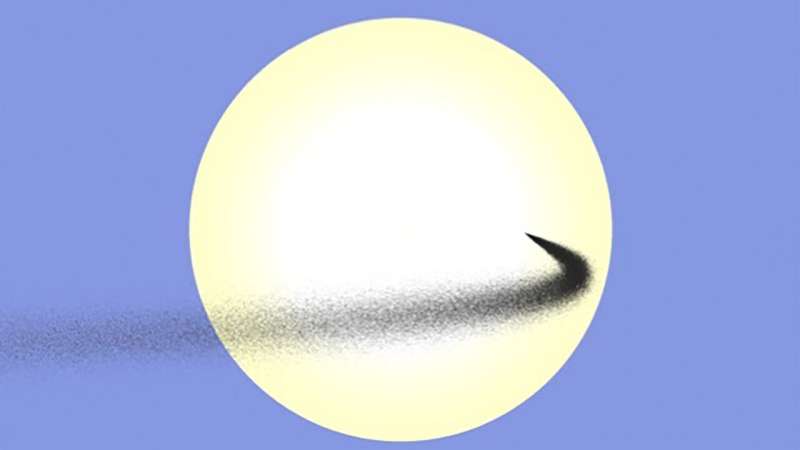
On a cold winter day, the warmth of the sun is welcome. Yet as humanity emits more greenhouse gases, the Earth's atmosphere traps more and more of the sun's energy, which steadily increases the Earth's temperature. One strategy for reversing this trend is to intercept a fraction of sunlight before it reaches our planet.
The paper, published today in the journal PLOS Climate, describes different properties of dust particles, quantities of dust and the orbits that would be best suited for shading Earth. The team found that launching dust from Earth to a way station at the "Lagrange Point" between Earth and the sun would be most effective but would require an astronomical cost and effort.
The team proposes moondust as an alternative, arguing that lunar dust launched from the moon could be a low-cost and effective way to shade the Earth.
"It is amazing to contemplate how moon dust—which took over four billion years to generate—might help slow the rise in the Earth's temperature, a problem that took us less than 300 years to produce," says study co-author Scott Kenyon of the Center for Astrophysics.
The team of astronomers applied a technique used to study planet formation around distant stars—their usual research focus—to the lunar dust concept. Planet formation is a messy process that kicks up astronomical dust, which forms rings around host stars. These rings intercept light from the central star and re-radiate it in a way that can be detected.
"It was rather difficult to get the shield to stay at L1 long enough to cast a meaningful shadow. This shouldn't come as a surprise, though, since L1 is an unstable equilibrium point," Khan says. "Even the slightest deviation in the sunshield's orbit can cause it to rapidly drift out of place, so our simulations had to be extremely precise."
In the second scenario, the authors shot lunar dust from a platform on the surface of the moon towards the sun. They found that the inherent properties of lunar dust were just right to effectively work as a sunshield. The simulations tested how lunar dust scattered along various courses until they found excellent trajectories aimed toward L1 that served as an effective sunshield.
The results were welcome news, the team says, because much less energy is needed to launch dust from the moon than Earth. This is important because the amount of dust required for a solar shield is large, comparable to the output of a big mining operation here on Earth.
Kenyon says, "It is astounding that the Sun, Earth, and Moon are in just the right configuration to enable this kind of climate mitigation strategy."
Just a moonshot?The authors stress that their new study only explores the potential impact of this strategy, rather than evaluate whether these scenarios are logistically feasible.
"We aren't experts in climate change, or the rocket science needed to move mass from one place to the other. We're just exploring different kinds of dust on a variety of orbits to see how effective this approach might be. We do not want to miss a game changer for such a critical problem," says Bromley.
One of the biggest logistical challenges—replenishing dust streams every few days—also has an advantage. The sun's radiation naturally disperses the dust particles throughout the solar system, meaning the sunshield is temporary and particles do not fall onto Earth. The authors assure that their approach would not create a permanently cold, uninhabitable planet, as in the science fiction story, "Snowpiercer."